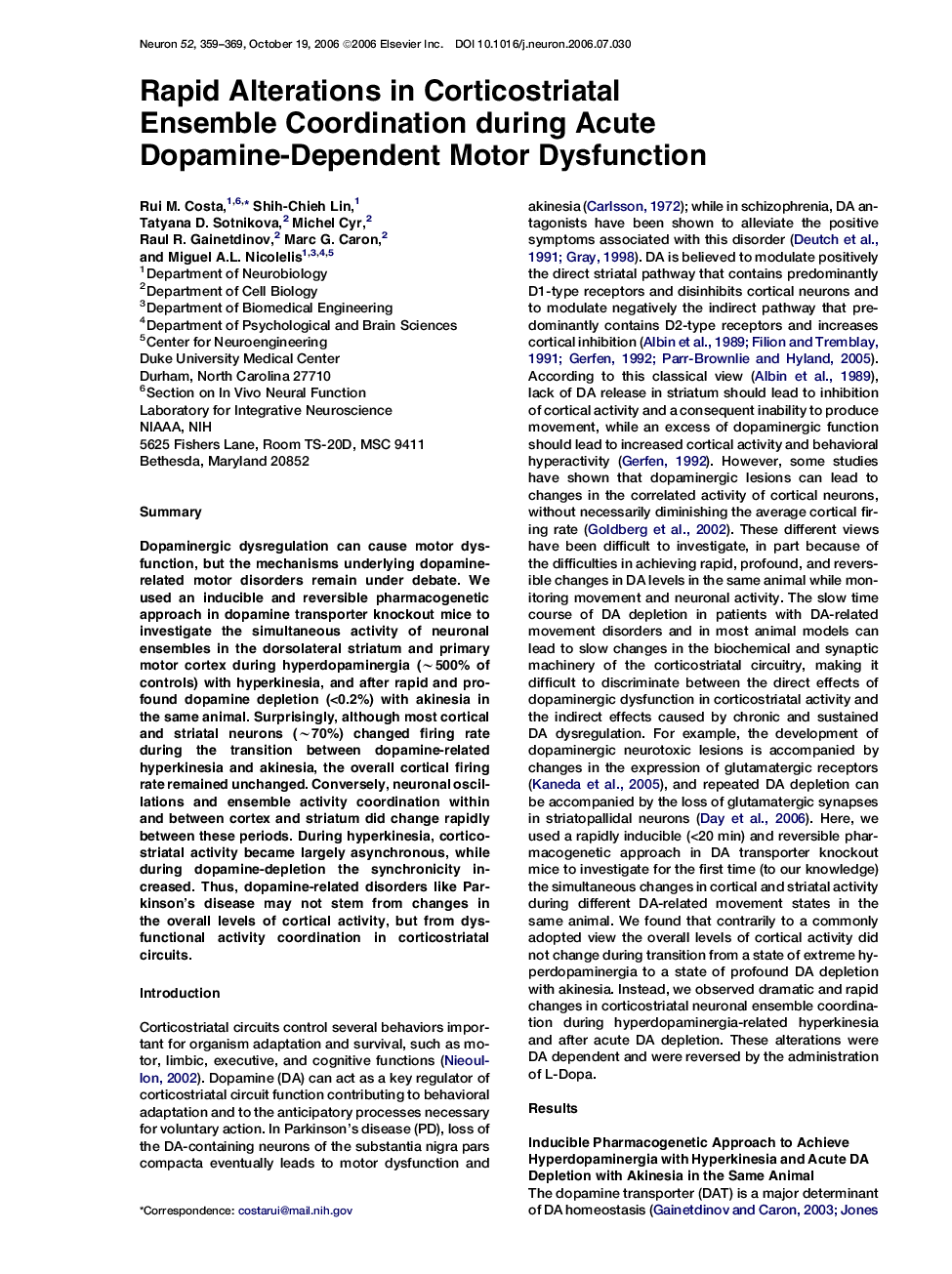| Article ID | Journal | Published Year | Pages | File Type |
|---|---|---|---|---|
| 4322890 | Neuron | 2006 | 11 Pages |
SummaryDopaminergic dysregulation can cause motor dysfunction, but the mechanisms underlying dopamine-related motor disorders remain under debate. We used an inducible and reversible pharmacogenetic approach in dopamine transporter knockout mice to investigate the simultaneous activity of neuronal ensembles in the dorsolateral striatum and primary motor cortex during hyperdopaminergia (∼500% of controls) with hyperkinesia, and after rapid and profound dopamine depletion (<0.2%) with akinesia in the same animal. Surprisingly, although most cortical and striatal neurons (∼70%) changed firing rate during the transition between dopamine-related hyperkinesia and akinesia, the overall cortical firing rate remained unchanged. Conversely, neuronal oscillations and ensemble activity coordination within and between cortex and striatum did change rapidly between these periods. During hyperkinesia, corticostriatal activity became largely asynchronous, while during dopamine-depletion the synchronicity increased. Thus, dopamine-related disorders like Parkinson's disease may not stem from changes in the overall levels of cortical activity, but from dysfunctional activity coordination in corticostriatal circuits.
